When it comes to designing and decorating a children’s room, the possibilities are endless. It’s a chance to create a space that not only reflects your child’s unique personality but also nurtures their imagination and provides a cozy sanctuary for rest, play, and growth. Whether you’re preparing a room for a newborn, transforming a nursery into a toddler’s haven, or revamping an older child’s space, having a checklist to guide you through the process can be immensely helpful.

Decorating a children’s room is an opportunity to let your creativity soar while keeping practicality and functionality in mind. From choosing the right color palette to selecting furniture, accessories, and storage solutions, each decision contributes to the overall ambiance and functionality of the space. The goal is to strike a balance between creating a visually appealing room and ensuring it caters to your child’s needs, providing a safe and stimulating environment.
This comprehensive checklist will walk you through the essential steps and considerations when decorating a children’s room. We’ll get into everything from incorporating your child’s input and selecting safe and durable materials to creating a floor plan, choosing furniture, and adding those special touches that make the room truly magical. With this checklist as your guide, you’ll be equipped with the knowledge and inspiration to design a space where your child can thrive, explore, and make lasting memories. So get ready to create a room that will bring joy to both you and your little one.
Consider Your Child’s input
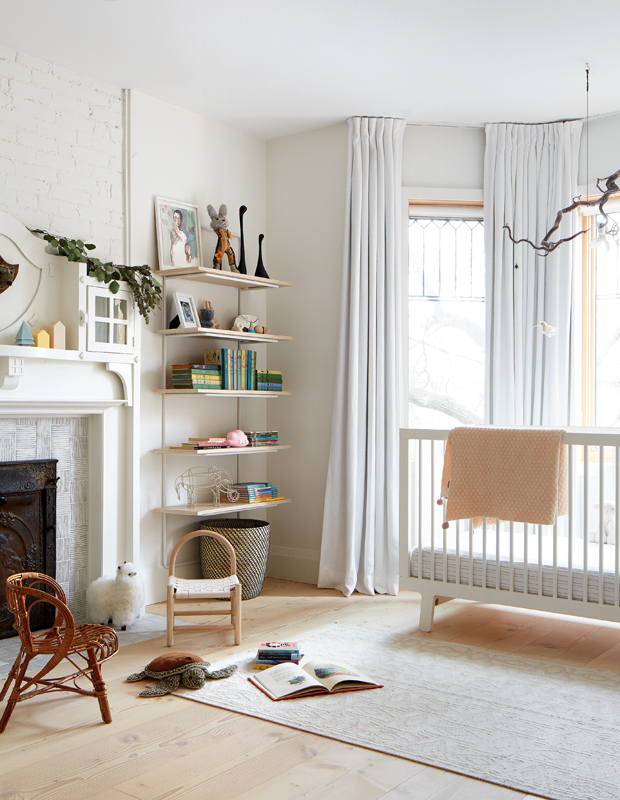
Incorporating your child’s input in the process of decorating their room is a wonderful way to make them feel involved and excited about their space. Take the time to sit down with your child and discuss their preferences, interests, and ideas for the room.
“Make the room truly theirs by involving your child in the design process. Let them choose favorite colors, themes, or artwork that reflects their personality and interests. This personalization fosters a sense of ownership and creates a space they truly connect with.”
Justina Blakeney, design blogger and author of “The New Bohemians.”
You can ask them about their favorite colors, characters, or hobbies. Let them have a say in selecting certain decorative elements or choosing the theme. By involving your child, you not only create a room that reflects their personality but also empower them to express their creativity and individuality.
Determine the Theme or Style

Before diving into the details, it’s essential to decide on a theme or style for the room. This will provide a cohesive direction for the overall design and make the decision-making process easier. Consider your child’s interests, hobbies, or favorite characters as a starting point. Whether it’s a princess-themed room or an outer space adventure, let their imagination take center stage.
Also: The 60-30-10 Design Rule: A Comprehensive Guide
Choose Safe Materials
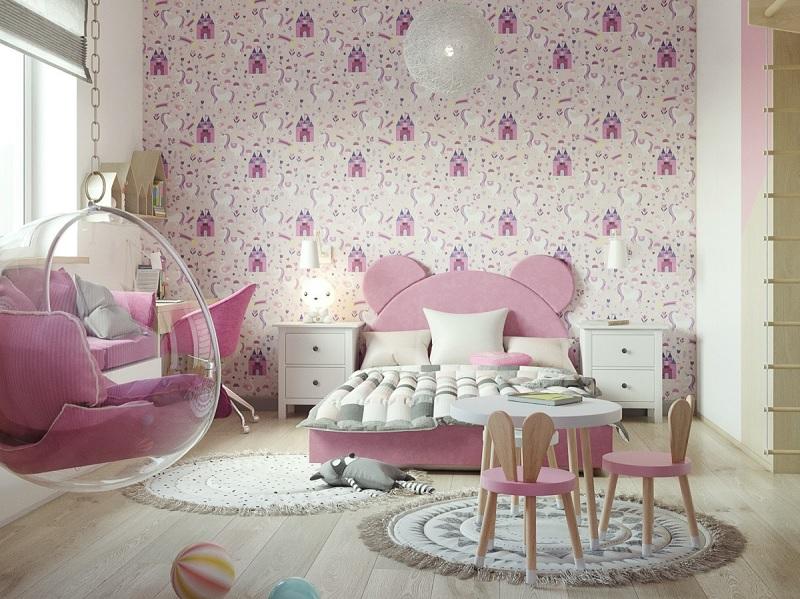
When it comes to choosing materials for your child’s room, safety should be a top priority. Opt for furniture and decor made from safe and durable materials. Look for items that meet safety standards and certifications. Avoid furniture with sharp edges or small parts that can pose a choking hazard.
Additionally, select nontoxic paints, adhesives, and fabrics to ensure your child’s health and well-being. Consider materials that are easy to clean and maintain, as children’s rooms are prone to spills and messes. By choosing safe and durable materials, you can create a room that not only looks beautiful but also provides a safe environment for your child to play and grow in.
“If you are looking for a way to style your space with wall art without breaking your piggy bank, then I recommend reading “10 Surprising Benefits of Printable Wall Art”
Consider Your child’s Activities
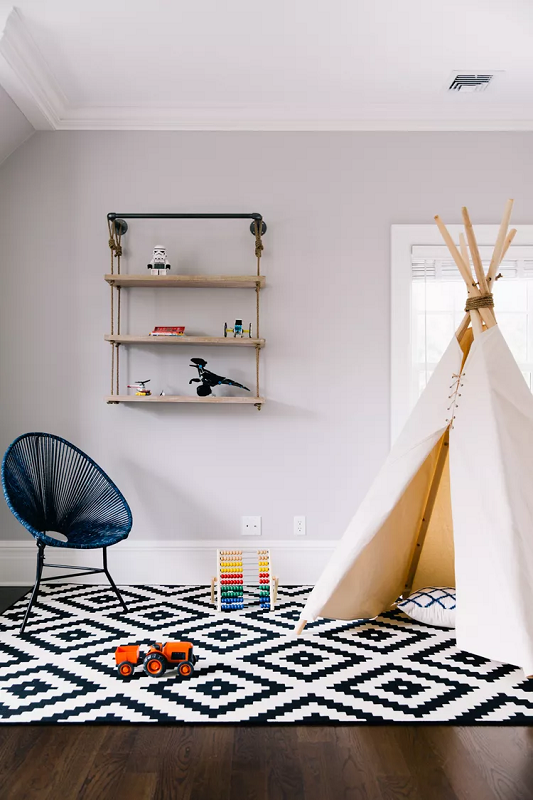
When decorating your child’s room, it’s important to consider the activities that will take place in the space. Think about how your child uses the room and tailor the decor accordingly. If they love playing with toys and games, create designated play areas with ample storage for their toys. Incorporate open shelves or toy bins to make it easy for them to access and tidy up their playthings.
“Designing a kid’s room is about striking a balance between fun and functionality. Ensure the space can adapt to their growing needs and interests with modular furniture, storage solutions, and designated areas for different activities like play, reading, and sleep.”
Emily Henderson, influential design blogger
If your child enjoys reading, create a cozy reading nook with a comfortable chair or bean bag and a bookshelf filled with their favorite books. For artistic and creative endeavors, set up an arts and crafts corner with a table, art supplies, and a display area for their artwork. By considering your child’s activities, you can create a room that not only looks aesthetically pleasing but also supports their interests and provides a functional space for their favorite pastimes.
Assess the Space
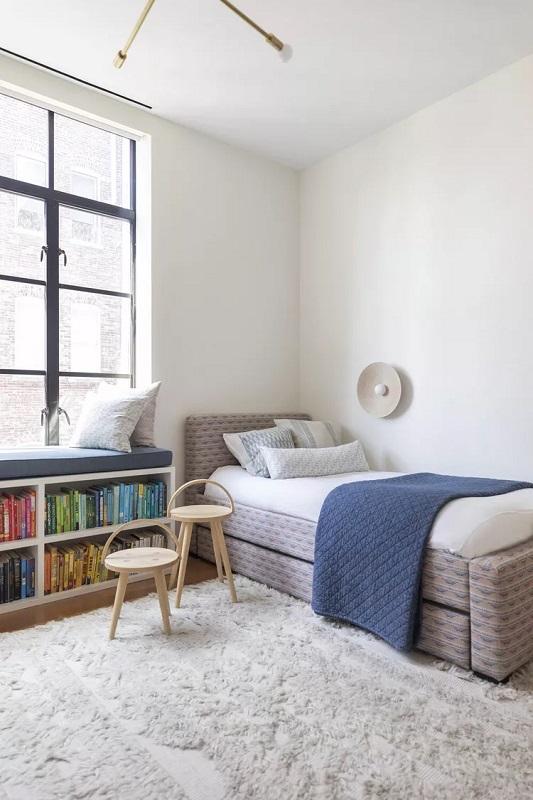
Take a good look at the room and evaluate its size, shape, and layout. Understanding the dimensions will help you plan the placement of furniture, storage, and decorative elements effectively. Consider any architectural features, such as windows or alcoves, that may impact the design. This assessment will inform your decisions throughout the decorating process.
Create a Budget
Decorating a children’s room doesn’t have to break the bank. Set a realistic budget to ensure you can prioritize your expenses. Decide on an allocation for furniture, paint, bedding, decor, and any additional items you may need. With a budget in mind, you can explore affordable options without compromising on quality or style.
Also: How to Choose the Perfect Interior Color Scheme for Your Home
Choose the Right Furniture
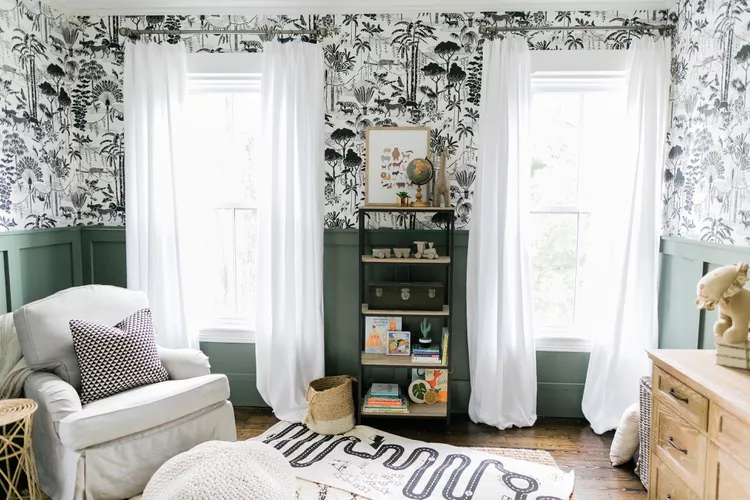
When selecting furniture for a children’s room, safety and functionality are paramount. Opt for pieces that are sturdy, easy to clean, and have rounded edges to minimize the risk of accidents. Consider versatile items that can adapt to your child’s changing needs, such as convertible cribs or adjustable desks. Don’t forget to leave ample space for play and movement.
Pick a Playful Color Scheme
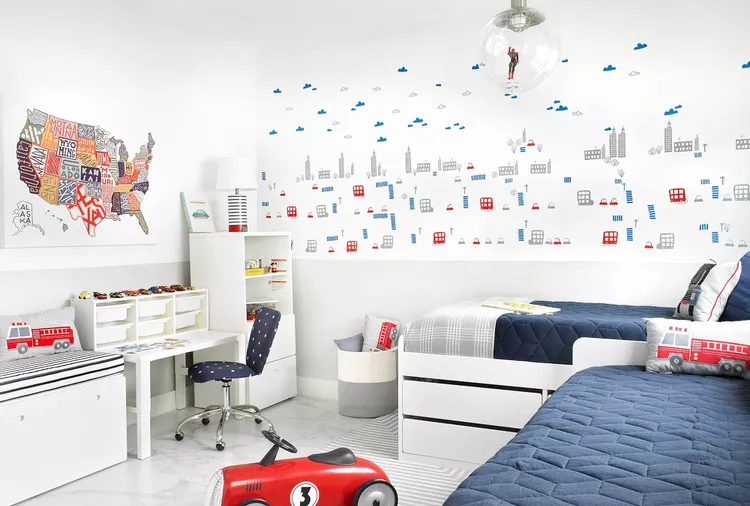
Color has a significant impact on a child’s mood and perception of the space. Choose a color scheme that is vibrant, playful, and age-appropriate. Consider using a combination of bold and neutral tones to create a balanced and visually appealing environment. Remember that colors can influence emotions, so select shades that promote a sense of calm and creativity.
“A child’s bedroom should be a world of wonder, a place where their imagination can soar. Don’t be afraid to embrace color, playful patterns, and whimsical touches that spark creativity and ignite their curiosity.”
Nate Berkus, acclaimed interior designer and television personality.
Focus on Functional Storage
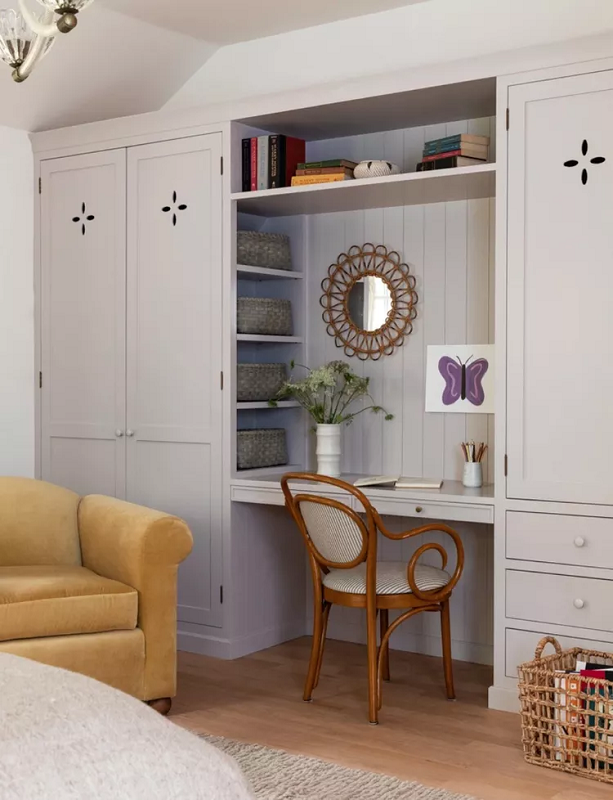
Children’s rooms often accumulate toys, books, and clothes, so incorporating functional storage solutions is crucial. Opt for child-friendly storage options like colorful bins, cubbies, or open shelves. These will not only keep the room organized but also make it easier for your child to access and put away their belongings independently.
Enhance the Lighting
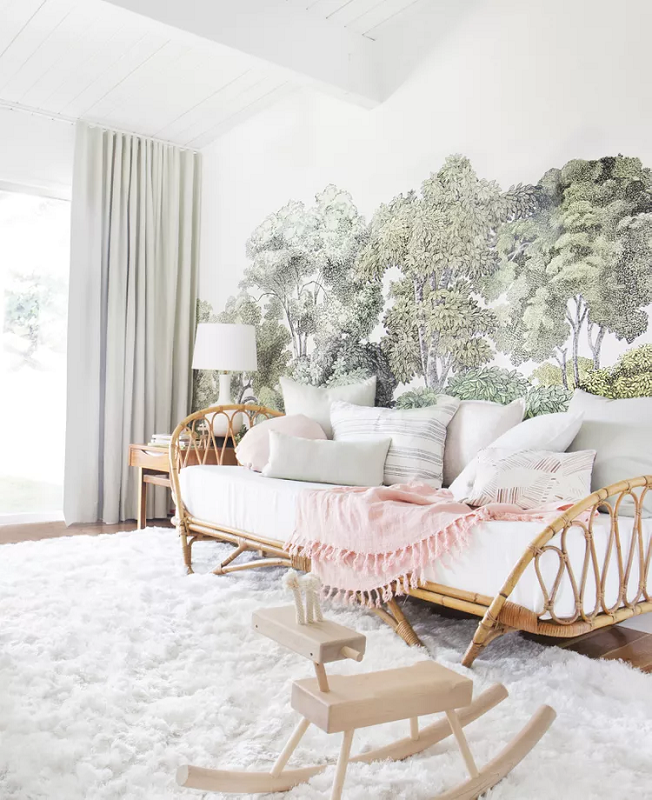
Lighting plays a crucial role in setting the mood and functionality of a children’s room. Ensure the room receives ample natural light during the day by using curtains or blinds that are easy to open and close.
Consider incorporating a mix of ambient, task, and accent lighting to create a versatile and cozy atmosphere. Dimmer switches can also be useful for adjusting the lighting as needed.
Also: Mastering the “One Hour Method” for a Spotless Home: A Comprehensive Guide
Create a Comfortable Sleeping Area
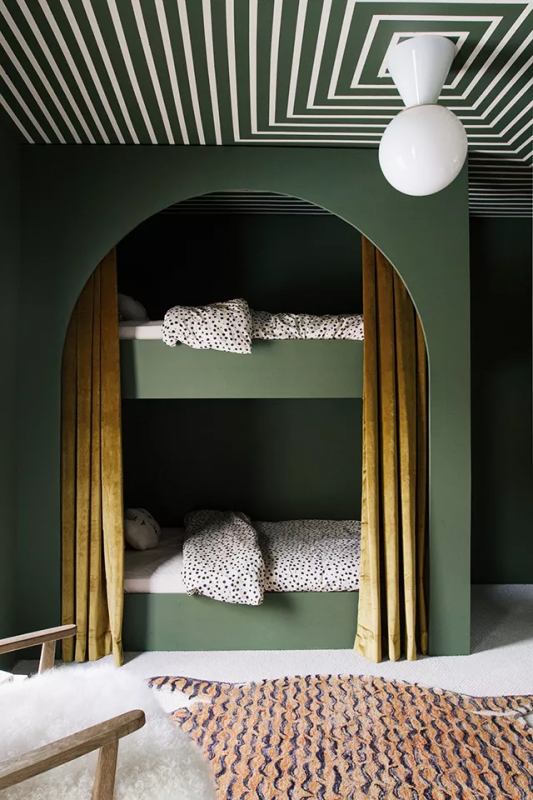
A good night’s sleep is essential for a child’s overall well-being. Choose a comfortable and age-appropriate mattress that provides adequate support. Select bedding that reflects the room’s theme and is cozy and inviting. Consider using blackout curtains or blinds to create a conducive sleep environment, especially if your child is sensitive to light.
Add Playful and Educational Elements
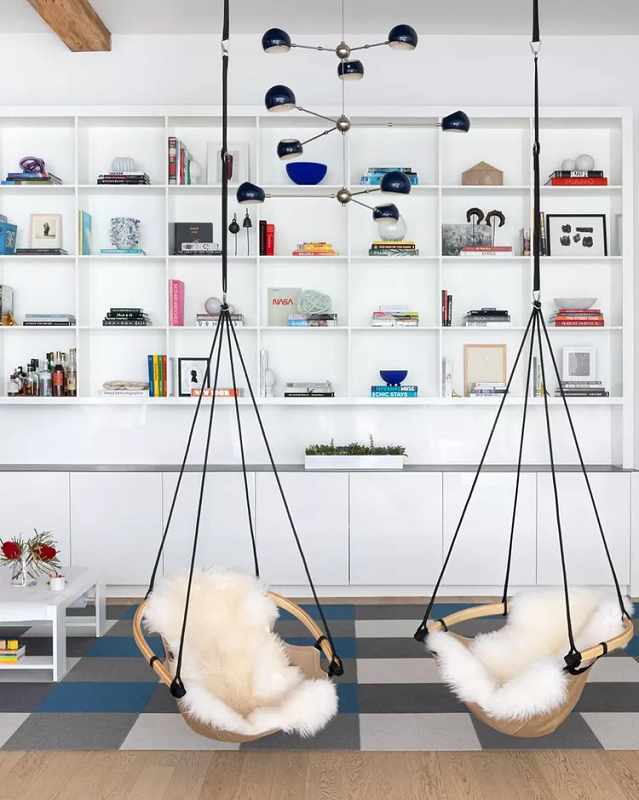
A children’s room should be a space where learning and play seamlessly blend together. Incorporate interactive and educational elements, such as a chalkboard wall, a reading nook with a bookshelf, or a designated arts and crafts area. These additions will foster creativity, imagination, and cognitive development.
Consider Safety Measures
Childproofing the room is of utmost importance to ensure your child’s safety. Install outlet covers, anchor furniture to the wall to prevent tipping, and ensure cords are safely secured or out of reach.
Place any sharp or hazardous items out of reach and use non-toxic paints and materials. Regularly check for potential safety hazards and make adjustments as your child grows.
Measure Room and Make a Floor Plan
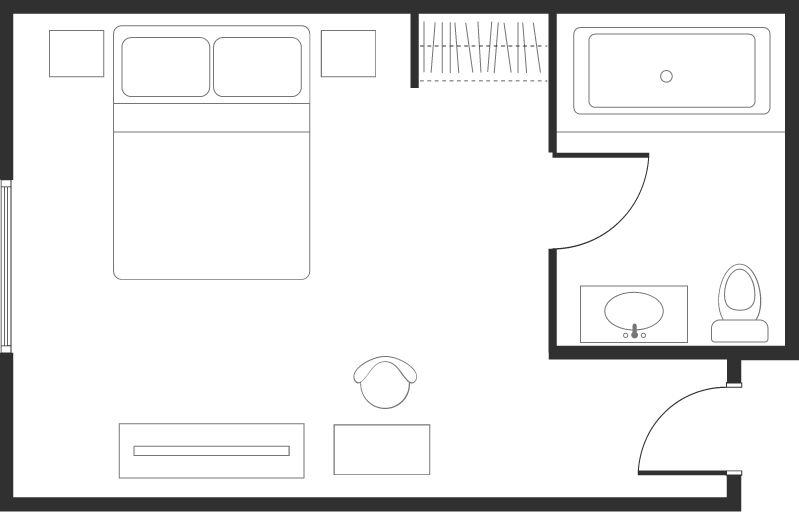
Before buying furniture for your child’s room, it’s crucial to measure the space and create a floor plan. This step is often overlooked but is essential to ensure that the furniture fits properly and allows for comfortable movement within the room.
Start by measuring the dimensions of the room, including the length, width, and height. Take note of any architectural features such as windows, doors, or alcoves that may impact the placement of furniture. With these measurements in hand, you can create a floor plan using graph paper or online tools that accurately represent the room’s layout.
Consider the scale of the furniture and how it will fit in relation to the size of the room. This process will help you determine the best arrangement for the furniture and avoid overcrowding or awkward positioning. By measuring the room and creating a floor plan beforehand, you can make informed decisions when selecting furniture that not only complements the room’s design but also maximizes space and functionality.
Also: Best Fall Decorating Ideas: Crafting Your Autumn Wonderland
Make Final List of Furniture to Buy
Creating a list of furniture pieces and items to buy is an essential step when decorating a children’s room. It helps you stay organized and ensures that you don’t overlook any necessary items. Start by considering the essential furniture pieces such as a bed, dresser, desk, and chair.
“Remember, a kid’s bedroom is a living space that evolves with them. Embrace the impermanence! Opt for flexible design elements, easily interchangeable decor, and pieces that can grow with your child, adapting to their changing needs and preferences over time.”
Abigail Ahern, British interior designer
Depending on your child’s age and needs, you may also want to include a bookshelf, storage bins, or a play table. Think about the specific theme or style of the room and consider any decorative elements that will enhance the overall design, such as wall decals, rugs, curtains, or artwork.
Don’t forget about lighting fixtures, such as a ceiling light or bedside lamp, to create the desired ambiance. When making your list, prioritize safety and choose durable, child-friendly materials. Consider the size of the room and how each piece of furniture will fit into the space.
By making a comprehensive list, you can ensure that you have everything you need before starting the shopping process, making the decorating process more efficient and enjoyable.
Checklist
To decorate a children’s room successfully, follow these main steps and make sure to have the following items on hand:
- Determine the theme or style: Choose a theme or style that reflects your child’s interests and preferences.
- Assess the space: Measure the room and consider any architectural features that may impact the design.
- Create a budget: Set a budget to guide your purchasing decisions.
- Choose the right furniture: Select sturdy and child-friendly furniture pieces that are both functional and safe.
- Pick a playful color scheme: Opt for a vibrant and age-appropriate color palette that matches the theme.
- Focus on functional storage: Incorporate storage solutions like bins, cubbies, and shelves to keep the room organized.
- Enhance the lighting: Use a combination of natural and artificial lighting to create a warm and inviting atmosphere.
- Create a comfortable sleeping area: Invest in a comfortable mattress and cozy bedding for a good night’s sleep.
- Add playful and educational elements: Include interactive items like a chalkboard wall, reading nook, or art corner.
- Consider safety measures: Childproof the room by installing outlet covers, securing furniture, and removing hazards.
Items you’ll need
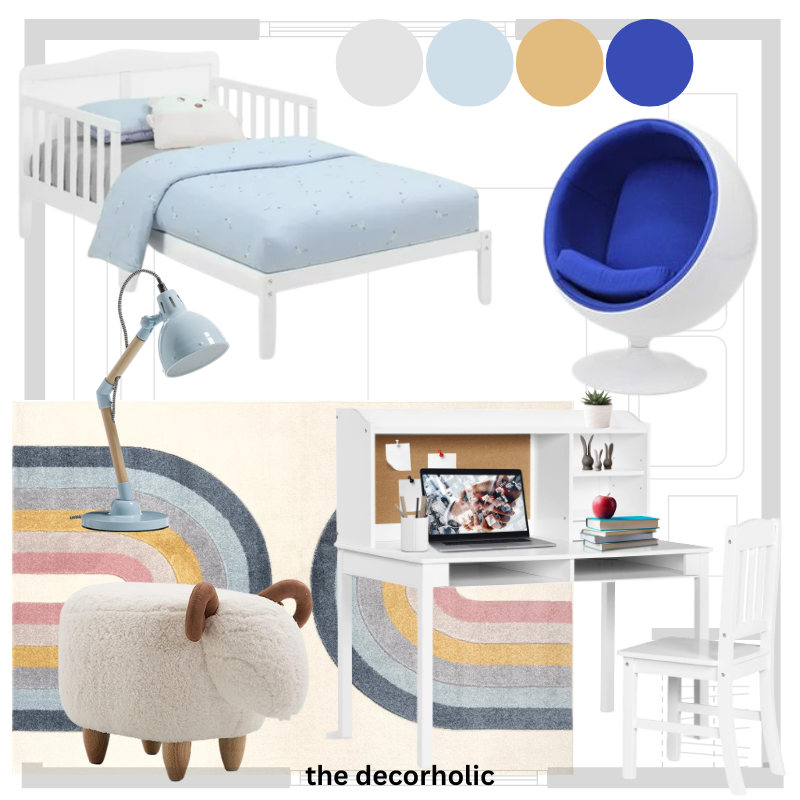
- Furniture: Bed, dresser, desk, chairs, shelves
- Bedding: Mattress, sheets, pillows, blankets
- Decorative items: Wall decals, artwork, rugs, curtains
- Storage solutions: Bins, baskets, toy organizers
- Lighting fixtures: Ceiling light, floor or table lamps
- Educational items: Books, puzzles, educational toys
- Safety equipment: Outlet covers, furniture anchors, cord organizers
Remember to personalize the room with your child’s favorite items and create a space where they can feel comfortable and inspired.
Most Popular Post:
10 Surprising Benefits of Printable Wall Art
How to Choose The Right TV Size to Decorate Your Living Room
The ultimate Smart Home Design Guide: Automate your life
Tips for Home Decorating on a Budget: Where to Splurge and Save
10 Best Couch Colors That Make a Room Look Bigger
Conclusion:
How to decorate a children’s room is a labor of love that goes beyond simply choosing colors and furniture. It’s about creating a haven where your child can grow, learn, and explore their world. By following this checklist, you’ll embark on a journey filled with excitement, creativity, and careful consideration.
Consider the activities that will take place in the room and create dedicated areas that cater to your child’s interests. Whether it’s a reading nook, a play corner, or an arts and crafts station, these spaces will foster their creativity, imagination, and cognitive development.
Lastly, remember that decorating a children’s room is an ongoing process. As your child grows and their interests evolve, the room will need to adapt accordingly. Embrace this opportunity for change and transformation, making adjustments as needed to keep the space engaging and age-appropriate.
By following this checklist and infusing your own personal touch, you’ll create a children’s room that not only looks stunning but also provides a nurturing and inspiring environment for your child’s development. It’s a space where dreams are nurtured, memories are made, and imaginations run wild.
Frequently Asked Questions (FAQs)
1. Can I involve my child in the decision-making process?
Absolutely! Involving your child in the decorating process can be a fun and empowering experience. Let them choose colors, themes, or specific decorative items. It’s an opportunity for them to express their individuality and make the room truly their own.
2. How can I make the room adaptable as my child grows?
To ensure the room remains functional and relevant as your child grows, opt for furniture and decor that can adapt. Choose convertible or adjustable pieces that can be modified to suit different stages. Additionally, consider using removable wall decals or artwork that can be easily updated or replaced.
3. How do I maintain a balance between aesthetics and functionality?
Finding the right balance between aesthetics and functionality is key. Focus on furniture that serves a purpose and incorporates decorative elements that align with the room’s theme. Consider using storage solutions that are both practical and visually appealing to keep the room organized and stylish.
4. Should I prioritize a specific age range in the room design?
While it’s important to consider your child’s current age, try to create a room design that can adapt as they grow. Choose timeless elements and avoid overly specific themes that your child may outgrow quickly. This will save you from having to redecorate frequently.
5. How can I personalize the room without making it too cluttered?
Personalizing the room is a wonderful way to make it feel special and unique. However, be mindful of not overcrowding the space. Select a few meaningful items, such as family photos or handmade crafts, to add a personal touch without overwhelming the room’s aesthetics.
6. Can I incorporate eco-friendly elements in the room design?
Absolutely! Sustainable and eco-friendly choices can be integrated into the room design. Look for furniture made from responsibly sourced materials, choose organic bedding and paint, and opt for energy-efficient lighting options. It’s an excellent way to teach your child about the importance of environmental stewardship.
CATCH THE LATEST IN HOME DECOR TRENDS:

Steal These 15 Expert-Approved Decorating Secrets

How To Accessories Your Living Room

Small Space? 10 Ways To Make A Room Appear Bigger

Make Your space Look Expensive
GET CAUGHT UP ON ALL THE INSPIRING DECOR TIPS:

18 Fresh Decorating Ideas To Update Your Fireplace

How To Create An Art Gallery Wall

